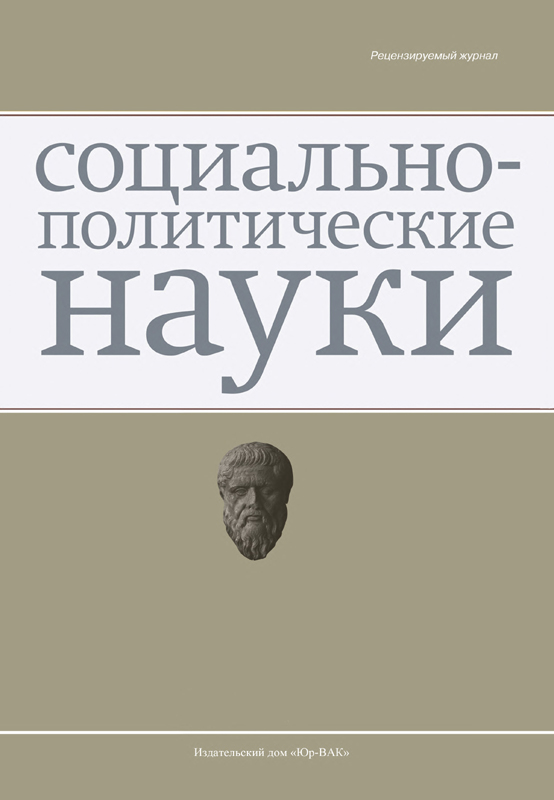Analysis of modern foreign methods in the field of sustainable development assessment
- Authors: Denikin A.V.1, Denikina Z.D.1, Sablukov A.V.2
-
Affiliations:
- Financial University under the Government of the Russian Federation
- Moscow State Linguistic University
- Issue: Vol 13, No 1 (2023)
- Pages: 87-92
- Section: Sociology of management
- URL: https://journals.eco-vector.com/2223-0092/article/view/545875
- DOI: https://doi.org/10.33693/2223-0092-2023-13-1-87-92
- ID: 545875
Cite item
Abstract
The purpose of this scientific article is to analyze modern foreign methods in the field of sustainable development assessment. Within the framework of the work, the main aspects related to foreign methods of assessing sustainable development were studied, their features were highlighted. In addition, differences between foreign and domestic methods were identified, as a result of which proposals for the introduction of certain aspects into Russian practice were described. The analysis of foreign experience allowed the author to formulate the following distinctive feature: the use of a large number of indicators, which is accompanied by a more thorough selection of the necessary indicators compared to Russian methods, as a result of which the entire structure is more complex and balanced. Conclusions. Most foreign methods for assessing sustainable regional development are based on the derivation of integral indicators based on the results of the analysis, which increases the effectiveness of the analysis and makes the process of interpreting the results simpler.
Full Text
About the authors
Anatoly V. Denikin
Financial University under the Government of the Russian Federation
Email: andenikin@yandex.ru
Doctor of Philosophy, Professor, Professor at the Department of Philosophy
Russian Federation, MoscowZoya D. Denikina
Financial University under the Government of the Russian Federation
Email: zooden@mail.ru
Doctor of Philosophy, Professor, Professor at the Department of Philosophy
Russian Federation, MoscowAlexander V. Sablukov
Moscow State Linguistic University
Author for correspondence.
Email: asablukov@mail.ru
Doctor of Sociology, Professor
Russian Federation, MoscowReferences
- Alferova T.V. Sustainable development of the region: Approaches to the selection of evaluation indicators. Bulletin of Perm University. Series: Economics. 2020. Vol. 15. No. 4. Pp. 494–511. (In Rus.)
- Arkhipova L.S. Analytical aspects of assessing the economic security of regions in the context of sustainable develop- ment. Economic Relations. 2020. Vol. 10. No. 3. Pp. 699–718. (In Rus.)
- Grebenkina S.A., Khrustalev E.Yu., Slavyanov A.S. Methodological foundations for ensuring sustainable development of the region. Bulletin of the Moscow University. Series 5: Geography. 2020. No. 1. Pp. 63–72. (In Rus.)
- Zenkina E.V. Modern approaches to assessing the sustainable development of countries. Bulletin of the Russian State University. Series: Economics. Management. Right. 2021. No. 2. Pp. 111–125. (In Rus.)
- Kurganov M.A., Tretyakova E.A. Assessment of sustainable regional development from the perspective of the realization of the values of key stakeholders. Journal of New Economics. 2020. Vol. 21. No. 4. Pp. 104–130. (In Rus.)
- Odintsova T.M. Problematic aspects of strategizing sustainable development of regions under sanctions and restrictions. Bulletin of the Vitebsk State Technological University. 2021. No. 1 (40). Pp. 232–245. (In Rus.)
- Tambovtsev V.L. Sustainable regional development: Actual directions of institutional analysis. Journal of Institutional Research. 2019. Vol. 11. No. 3. Pp. 104–118. (In Rus.)
- Fattakhov R.V., Nizamutdinov M.M., Oreshnikov V.V. The as-sessment of the sustainability of socio-economic development of the regions of Russia. The World of the New Economy. 2019. No. 2. Pp. 97–110. (In Rus.)
- Barthoulot M. Estimation de la survie globale à partir des données administratives hospitalières avec intégration des données de décès de l’INSEE: l’expérience du Centre Oscar Lambret. Revue d’Épidémiologie et de Santé Publique. 2022. Т. 70. S. 96–99.
- Biotteau A.L. et al. Les personnes les plus aisées sont celles qui bénéficient le plus des mesures socio-fiscales mises en œuvre en 2018, principale-ment du fait des réformes qui concernent les détenteurs de capital. Insee, France, portrait social. France, portrait social. 2019. S. 133–155.
- Bonnet J., Coll-Martínez E., Renou-Maissant P. Evaluating sustainable development by Composite Index: Evidence from French Departments. Sustainability. 2021. Pp. 761–780.
- Emovon I., Oghenenyerovwho O.S. Application of MCDM method in material selection for optimal design: A review. Results in Materials. 2020. Vol. 7. Pp. 100–115.
- Engel R.S. et al. Examining the impact of Integrating Communications, Assessment, and Tactics (ICAT) de-escalation training for the Louisville Metro Police Department: Initial findings. Alexandria, VA: International Association of Chiefs of Police. Retrieved. 2020. Vol. 2. Pp. 194–202.
- Keen S. Initiative for Climate Action Transparency – ICAT sustainable development pilot case study: An assessment of the sustainable development impact of biodiversity policy in South Africa through the ICAT SD Guidance 2. Research Gate. 2019. Pp. 310–323.
- Lisboa S.N. et al. Applying the ICAT sustainable development methodology to assess the impacts of promoting a greater sustainability of the charcoal value chain in Mozambique. Sustainability. 2020. Vol. 12. No. 24. Pp. 103–118.
- Martín C.J., Carnero M.C. Evaluation of sustainable development in European Union Countries. Appl. Sci. 2019. No. 9. Pp. 880–890.
- Tan T. et al. Combining multi-criteria decision making (MCDM) methods with building information modelling (BIM): A review. Automation in Construction. 2021. Vol. 121. Pp. 103–112.
- Silvestre B.S., Ţîrcă D.M. Innovations for sustainable development: Moving toward a sustainable future. Journal of Cleaner Production. 2019. Vol. 208. Pp. 325–332.
- Yasmin M. et al. Big data analytics capabilities and firm performance: An integrated MCDM approach. Journal of Business Research. 2020. Vol. 114. Pp. 1–15.
Supplementary files














